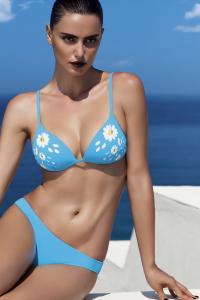Everything posted by phenobarbie
-
Catrinel Menghia
<--- I dunno what is going on there, but it looks like something is trying to break free... gogo alien style
-
The best body of fashion
Valentina Zelyaeva - 12 Candice Boucher - 8 Laetitia Casta - 7 Izabel Goulart - 10
-
Models Competition
Lips: 6 Smile: 3 Hair: 10 Eyes: 8 Nose: 1 Abs: 1 Cleavage: 5 Butt: 1 Legs: 8
-
Best Editorial of 2010
Christy x3
-
The best body of fashion
Emanuela de Paula (7) Karen Mulder (10) Helena Christensen (8) Daniella Sarahyba (12)
-
Battle of the Bods
Where did you see my lower back o.0
-
Battle of the Bods
- Battle of the Bods
I didn't see a problem with the cleavage shot, not only did it adequately show the cleavage the full length body shot showed the cleavage as well, and it wasn't bad cleavage. Don't be grumpy because you didn't like the final results. Current round 2- The best body of fashion
Cindy Crawford - 10 Inguna Butane - 7 Brooklyn Decker - 8 Esti Ginzburg - 12- Battle of the Bods
bump 3 votes needed- The best body of fashion
Michea Crawford - 12 Ana Beatriz Barros - 8 Bridget Hall - 10 Stephanie Seymour - 7- Best Editorial of 2010
The Untold Crime x3 The other one is just a bit to washed out for my liking...- Battle of the Bods
Only when I care- Battle of the Bods
2.5- Battle of the Bods
Red I repeat.. get yer butt on wow!!! we have need of a cat- Battle of the Bods
Red get on wow.. we r doing dungeons- The best body of fashion
Irina Shayk - 7 Karolina Kurkova - 10 Edita Vilkeviciute - 8 Marloes Horst - 12- Battle of the Bods
New round as soon as I log off WoW and eat dinner- Models Competition
Lips: 6 Smile: 5 Hair: 5 Eyes: 6 Nose: 6 Abs: 7 Cleavage: 9 Butt: 8.5 Legs: 6.5- The best body of fashion
Well, feel better- The best body of fashion
I'm not saying your opinion is a joke, I just don't think it was necessary. But I hear you on just wanting to vent sometimes.. I think I do it enough to drive some members crazy.- The best body of fashion
What a joke How so? Just because you don't like the results, doesn't mean it's a joke. I for one don't like Candice's body as I find it to be exceptionally bottom heavy and quite disproportionate, but I don't find the results a joke because other people disagree with that assessment. Seriously, you seem to have a fairly bad attitude lately when it comes to the 'supers' not fairing well against the more recent models. We get you like the supers, but that doesn't make everyone's opinion incorrect or 'a joke'- The best body of fashion
Claudia Schiffer - 7 Alessandra Ambrósio - 10 Petra Nemcova - 12 Paulina Porizkova - 8- Kate Upton
If she wasn't doing these things I'd be slightly concerned and I don't think her personality would sparkle as much. I didn't realize there was a portfolio book last year, I'll take a look around and see if it's still available, though there were no real knockouts for me last year. This year I'd definitely like to see what else Kate can do... and possibly Esti. Izabel was a huge disappointment.. and I still have trouble looking beyond Alyssa's eyebrows.- Kate Upton
Not touching that debate because my opinion isn't flattering about the blond haired vacant eyed hippy, (all hip, no top) no tits blond.. You should all be able to figure out which one that's for. Kate looked gorgeous in her videos, hopefully something like the Swimsuit portfolio that came out 2 years ago comes out for this one. The pictures in it were better then the actual swimsuit edition and I would love to see some more of Kate in a swimsuit - Battle of the Bods

